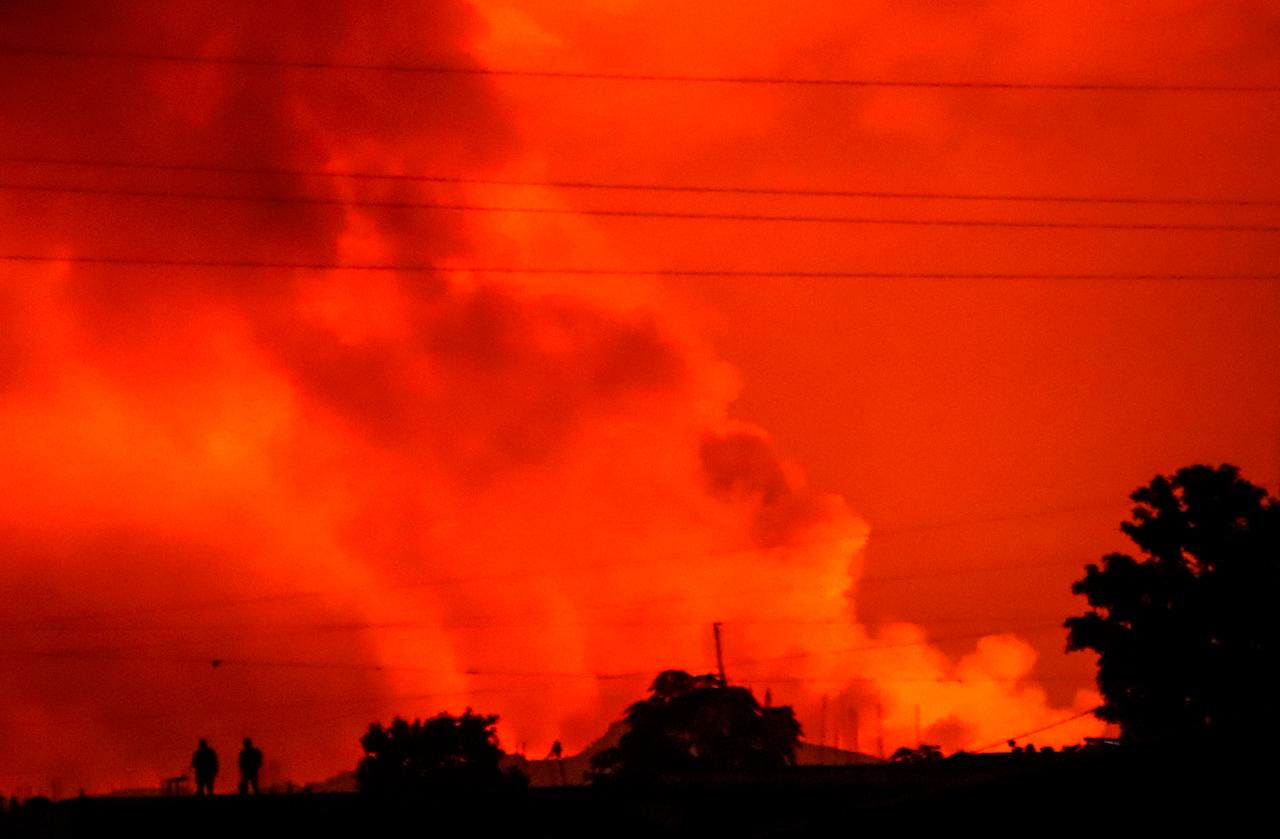Homes burned, children missing after deadly volcano erupts in Congo
The lava spewed by Mount Nyiragongo is particularly fluid and can move very fast.
Just In
Democratic Republic of Congo volcano Mount Nyiragongo erupted on Saturday, turning the sky red and spewing out a river of lava that flowed towards Goma, a city of two million.
Fifteen deaths have been confirmed, but the number is likely to rise as rescuers and officials reach the hardest-hit areas.
At least nine were killed in traffic accidents as people fled to safety.
Four others were killed as they tried to escape a local prison, government spokesman Patrick Muyaya said on Sunday.
More than 170 children are feared missing and 150 others were separated from their families, according to Unicef, which said centres would be set up to help unaccompanied minors.
The lava halted on the outskirts of Goma, burying hundreds of houses and even large buildings.
Once the eruption subsided, local residents returned to find destroyed houses and loved ones missing.
“All the houses in Buhene neighbourhood were burned,” Innocent Bahala Shamavu told the AP news agency.
Lava crossed one highway connecting Goma to the city of Beni, severing a key aid and supply route. However, the city’s airport was untouched, despite earlier reports that it had been affected.
“Seismic tremors have been felt in the aftermath,” Muyaya tweeted. “People are advised to remain vigilant, avoid non-essential travel, and follow directions.”
The volcano, located 10km from Goma, last erupted in 2002, killing 250 people and making 120,000 homeless.
Residents started leaving their houses even before the government announced an evacuation plan. At night, crowds were seen fleeing on foot with mattresses and other belongings.
Rwandan authorities said more than 3,000 people had officially crossed from Goma. Some started to return on Sunday. Others went to higher ground to the west of the city.
One Goma resident, Richard Bahati, said he was in his house when he heard screaming and became extremely worried as he saw the sky reddening outside.
“I lived through the problem with this volcano in 2002. The volcano devastated all our homes and possessions,” he said.
A local trader, Kambere Ombeni, was among those who returned to the scene as the rubble still smouldered. “We watched the whole neighbourhood in the Nyiragongo territory go up in smoke. The fire came right down to here. Even now we can still see lava,” he said.
Mount Nyiragongo is one of the world’s more active volcanoes but there were concerns that its activity had not been properly observed by the Goma Volcano Observatory, since the World Bank cut funding amid allegations of corruption.
Professor Mike Burton, a volcanologist at the University of Manchester in England, told the BBC that the lava in Mount Nyiragongo is particularly fluid and has the potential to move fast.
The volcano’s deadliest eruption happened in 1977, when more than 600 people died.
Subscribe to our newsletter
To be updated with all the latest news and analyses daily.
